Juventud Rebelde 221
Death Over the Factories of Death

Death Over the Death Factories
War industries, U.S. priorities for economic reopening in the midst of the COVID-19 pandemic, as Pentagon budget continues to rise madly.
 August 10, 2020
August 10, 2020
By Juana Carrasco Martín
juana@juventudrebelde.cu
Translated and edited by Walter Lippmann for CubaNews.
It could be the agricultural implement factories, but that is not the case. They should increase protective measures for workers in the meatpacking industries, for employees in supermarkets, or for agricultural workers, but that is not their intention either.
There isn’t even an equal standard for health-care workers, and Blacks and Latinos are infected with the new coronavirus three times more than their white counterparts, according to a New York Times analysis of the records of the Centers for Disease Control and Prevention (CDC).
The study also found that minority workers were 20 percent more likely than white workers to care for suspected or confirmed Covid-positive patients. The rate rose to 30 percent specifically for Black workers. In addition, they also reported inadequate or reused protective equipment (PPE) at a rate 50 percent higher than that reported by white workers. For Latinos, the rate was twice that of white workers.
Although the SARS-CoV-2 pandemic is not over, and, on the contrary, there is a resurgence of infections in those states that prematurely relaxed or lifted restrictions on social or physical distancing – to be more precise – those that set about economic movement brought, in not a few cases, a priority that projects good times for… the Pentagon and the war industry.
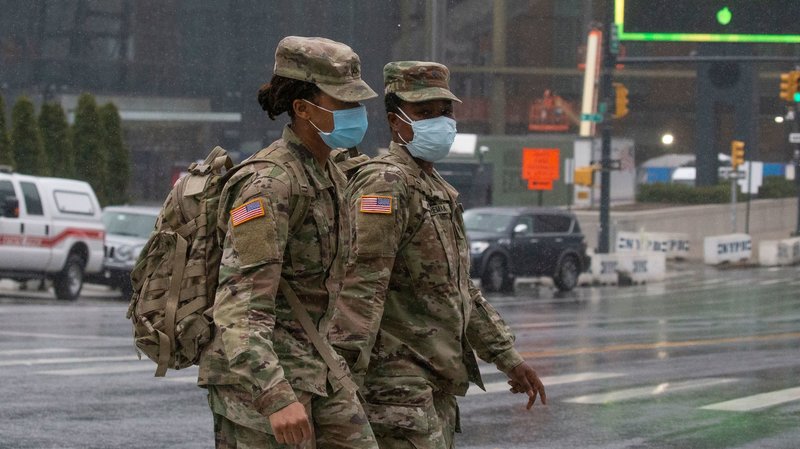
U.S. military personnel, seen outside the overflow hospital at the Javits Convention Center in Manhattan last month. The Pentagon has issued interim guidance advising caution pursuing recruits who have been hospitalized previously with COVID-19.
Nor is Eisenhower taken into account
The reality surpasses logic in the Trump administration. Making money continues to be the interest and not the care of people’s lives. That is why national security is being relieved, leaving aside a total battle against the enemy SARS-CoV-2 pandemic and continuing to bet on a war, or all the necessary ones, anywhere in the world against a supposed enemy that allows them to manufacture bombs and war equipment of all kinds.
When the numbers of infected and dead in the United States are terrifying -4,941,796 people infested, so probably this Sunday it will reach five million-, Congress has already discussed the Pentagon’s budget. We remember that independent Senator Bernie Sanders, published an opinion in The Guardian, in which he presented a true picture, a warning and a call:
“At this unprecedented moment in America’s history–a terrible pandemic, an economic crisis, people marching across the country to end systemic racism and police brutality, growing inequality of income and wealth, and an unstable president in the White House–now is the time to bring people together to fundamentally alter our national priorities and rethink the very fabric of American society.
The fact is that they approved $740 billion in spending and ignored Sanders’ proposal to cut 10 percent and target it to meet the needs of the most disadvantaged in the U.S. population, which would have been $74 billion for housing, education and health care, essentially. And the Vermont senator cited a Republican hero, General Dwight Eisenhower, who said in 1953 “Every gun that is made, every warship launched, every rocket fired means, in the final sense, a theft from those who are hungry and are not fed, those who are cold and are not clothed. This world in arms is not spending money alone. It is spending the sweat of its workers, the genius of its scientists, the hopes of its children.
The current situation is much more critical: a quarter of the U.S. population is living from paycheck to paycheck, and now from the pandemic subsidy check, which in July has not yet been approved by Congress; between 22 and 40 million fear eviction for not being able to pay the rent, 40 million also live in poverty, and 87 million lack adequate health insurance.
Sanders is not the only one busy with waste. California Democratic Representative Ro Khanna is proposing that money for the “modernization” of intercontinental ballistic missiles go to research on the anti-Covid vaccine. California Democratic Congresswoman Barbara Lee is calling for a $350 billion cut in the war budget.
Even Eisenhower could not change the military-industrial complex of which he warned, and even less do Sanders, Khanna and Lee, although they appeal to the emergency caused by the new coronavirus, when the President of the country, Donald Trump, daily minimizes the magnitude and lethality of the pandemic and only takes advantage of it to lead the situation in order to be re-elected next November.
Among his most recent manipulative expressions are assuring that children “are practically immune” to COVID-19, and almost assuring that they will have a life-saving vaccine by November 3 – election day – because he is pushing it with all his might, even though he says it is not to win at the polls, he wants to save lives?
Trump, who has long sought exclusivity on potential vaccines, announced in May that the huge task of delivering the vaccine will be in the hands of the military in conjunction with the CDC. At the time he said it would be at the end of the year, but the circumstances surrounding the election campaign, which are not in his favor, have led him to make the hasty declaration that in November he has the salvation of the world in his hands?

The military and COVID-19
There is a reality, in these dramatic times and when the number one enemy should be the pandemic. The Department of Defense is not accountable for its expenditures, while its contractors are making huge profits, as always, under the cover of a circumstance long highlighted by critics of the system. The main recipients of war industries’ contributions to their respective election campaigns are the members of the House and Senate Armed Services Committees.
To make matters worse, the new coronavirus has served to compensate arms manufacturers for alleged losses in profits as well. For example, General Electric, which has laid off 25 percent of its workforce, received $20 million to expand its development of “advanced manufacturing techniques,” and Spirit Aerosystems received $80 million to expand its domestic manufacturing after laying off 900 workers.
Some analysts warn that military expenditures could be reduced if the billions spent on the new Cold War with China were not available; if the Pentagon’s requests to buy the controversial and clearly imperfect F-35 fighter planes from Lockheed Martin were not met; or on Trump’s new warrior invention, the Space Force.
Included in the waste is General Dynamics Electric Boat’s $126 billion nuclear submarine program, the new Ford class aircraft carrier built by Huntington Ingalls for $13.2 billion, and its launch system that remains unlaunched but earns a profit for General Atomics. By the way, Bloomberg reported that the ship’s toilets are frequently clogged and can only be cleaned with specialized acids that cost about $400,000 per flush…).
The clogging is greater in those Pentagon priorities, when it becomes known from a June article in Tom Distpach, that in February 2018, the Government Accountability Office, which to some extent oversees federal spending, warned that the Defense Department’s health care system lacked the capacity to handle routine needs, let alone wartime emergencies, and within the ever-increasing military budget, military health care has grown next to nothing.
The 41,361 individuals linked to the Department of Defense, both military and civilian employees, infected with COVID-19, and in a staff mostly in the 18-24 age range we have not found the recognized number of deaths, will they be the humane and disposable part of that budget “oversight”?
Weddings and quinces in Camagüey

Weddings and quinceañeras in Camagüey
In Camagüey, it seemed that quinceañeras and couples planning to get married would have to give up the celebration of their dreams in this fateful year…
By Yahily Hernández Porto
July 23, 2020
Translated and edited by Walter Lippmann for CubaNews.
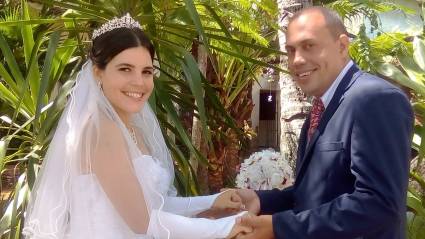
This couple was the first to be married after the threat of COVID-19 in Camagüey. Author: Yahily Hernández Porto Published: 23/07/2020 | 12:12 pm
CAMAGÜEY: Both were close in their professions, but they never stopped their routines to get close to each other. An occasional greeting was their only relationship at the Agramontine military hospital.
But since the beginning of the year, their concern brought their lives closer, because the pandemic that had just emerged in the Asian giant was taking away their sleep, as it did for thousands of Cubans.
Last March, when Covid-19 entered Cuba, their paths intertwined as they worked in the red areas of the hospital and made a decision that surprised many people.
“After experiencing that life can escape without fulfilling some dreams, we decided to get married as soon as the bio-security measures allowed it,” Ana María Nápoles Salas, 26, a stomatologist by profession, comfided to JR.
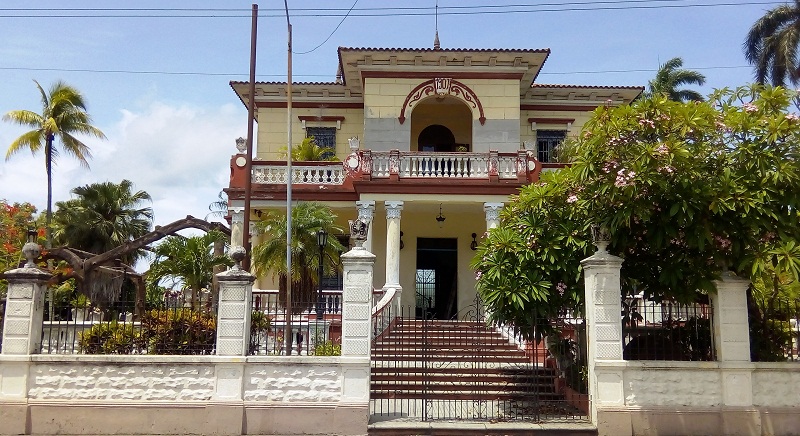
The emblematic Palacio de los Matrimonios in Camagüey celebrated its first post-pandemic wedding.
Just last July 7th JR witnessed the first post-pandemic wedding in this city, in the colonial Palace of Marriages. While the bride was talking to this reporter, the general surgeon, Major Germán Antonio Guilarte León, 36, took the opportunity to give her a mischievous surprise kiss.
THE QUINCEAÑERAS GET READY
With the same impetus as this couple, several teenage girls from Agramonte take up their dreams again and project the rescue of their Quinceañera, which they saw interrupted with fear and frustration: the parties and the traditional photographs were postponed due to the pandemic, but since the second phase many have returned to the beautiful palace or are taking turns in private homes dedicated to this celebration.
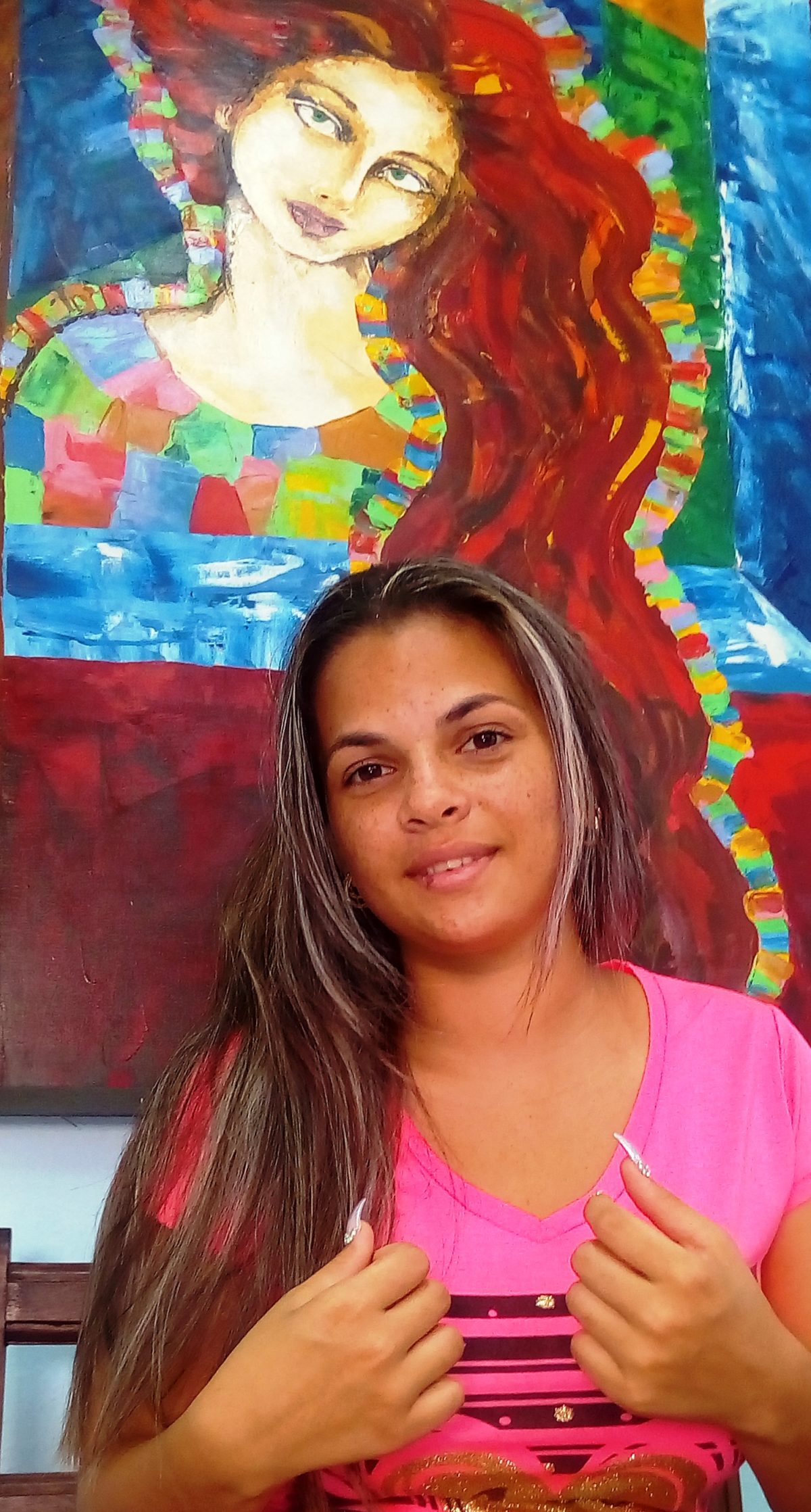
Quinceañera Yadianis Beltrán did not hesitate to resume her celebration.
“I always knew that when it all happened I’d have my party. Now I’m doing my hair to look good in the photos,” said a smiling Yadianis Beltrán Gutiérrez, who had to settle for a family meal on April 28.
In the contract office of the beautiful institution in Camagüey, several girls, along with their parents, wait for their turn to renew the date, Others are just looking for information to choose from, because there are many options in the City of Tinajones, where even quinceañeras from other provinces arrive to eternalize memories.
Jennifer Yadisley Cabreja González and Yarenmis Mendoza Flores are waiting in line to celebrate their Quinceañera on July 31st and August 29th, respectively.
The former said to this newspaper that “despite the activities suspended during the pandemic, there is no problem with work shifts”, and Yarenmis was relieved by her “luck with her birthday”, and showed solidarity with the girls who served in the midst of social isolation.
Such is the story told by Katia Faife Dorca, mother of the teenager Yuliagnis Zaldívar, who had to postpone the big family reunion, scheduled for May 4, and is currently reorganizing it so that loved ones who are abroad can attend, when everything is back to normal: “It is a comfort to know that everyone will have their chance without setbacks,” said this mother.
According to Isabel María Abad Mena, administrator of the Palacio de los Matrimonios, when the institution closed last March all weddings and quinceañera and birthday celebrations already reserved were suspended, in addition to those planned for April, May and June.
To the happiness of many, the multiple services of the Palace are now available and interested families may hire them, provided they are presented at least one month in advance.
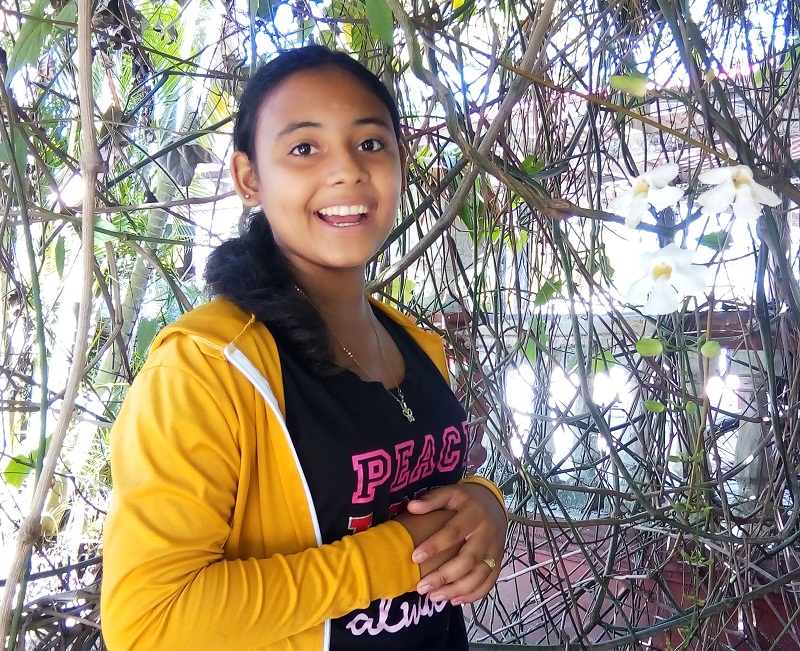
Young Yaremnis Mendoza is happy because her contract is secured for August.
“Several biosecurity measures have been implemented that must be strictly adhered to within the center, but none of them affect the quality of what’s available and the well-being of those who come to celebrate their big day,” she insisted.
She stressed that contracts with clients from other provinces, including those outside the country, will be carried out as long as the measures taken at each stage and in each region allow it. “That’s why now in our palace we only accept clients from Matanzas to Guantánamo, the rest of the West will have to wait”.
Abbot Mena pointed out that the capital reparations in the founding house was not interrupted during the pandemic period. At present, for the sake of quality and variety of the photographs, several exterior locations of the mansion have been added, where a natural, original and distinctive scenery is projected to embellish not only the portraits, but also the formal act and the toast.
THE PRIVATE SECTOR OPENS ITS DOORS
In addition to the Palace of the Married Couples in Camagüey, other family businesses that carry out this activity with creative passion are favored by the recovery of these festive services. This was corroborated by JR’s visit to some very popular and well-established private establishments located in the historic center of Agramonte.
At number 69 Avellaneda Street is the house Ilusión Estudio, which closed its services in March, despite having several weddings and fifteen celebrations scheduled. Its owners, Yuleidy Cabrera and Anuar Rodríguez, even canceled the quinceañera of their own daughter, Viviana, who was looking forward to celebrating on May 17th.
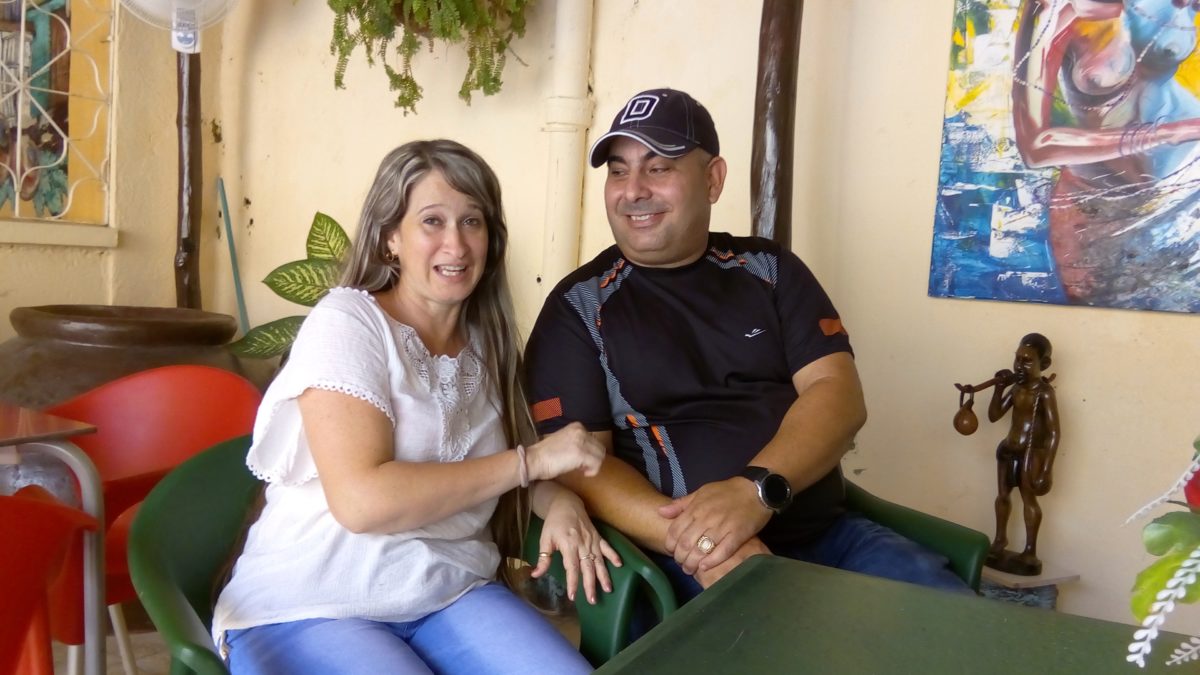
The Ilusión Estudio family returns to normal after their daughter canceled her quinceañera.
“Our daughter understood the moment in which the country and the world were living. Now we are restoring services according to the conditions and possibilities of each family that chooses us,” explained Yuleidy.
Equally demanding were the owners of the Iris V/S Alex studio, one of the oldest in Camagüey, at 586 Pobre Street: “My father-in-law, Jesús Peña, started the photography business in the 1980s, and he assures us that he had never experienced anything like this before. We have been disciplined with the measures and now we are restarting the services to satisfy the clientele according to the resources we have,” said Iriannis.
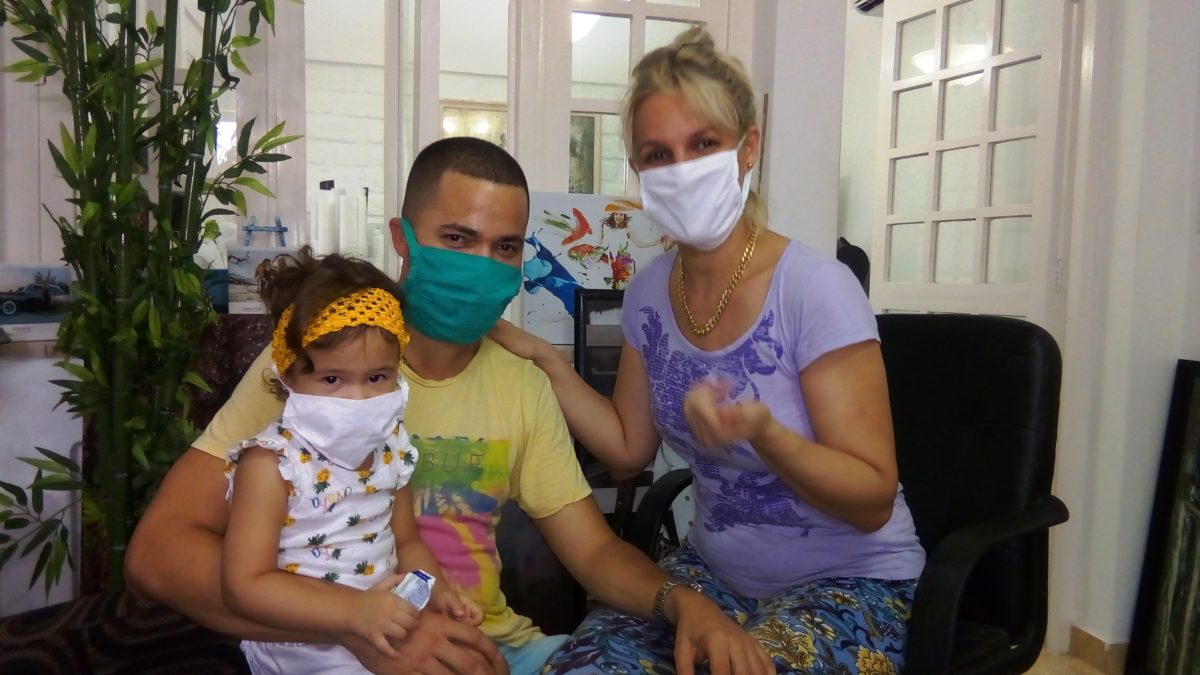
The Iris V/S Alex studio house also opens its doors to the public. Photos: Yahily Hernández Porto
During the months of confinement, both she and her husband Alex dedicated themselves entirely to “spoiling” the family. Now they are creating conditions for the reopening of their small business, like so many entrepreneurs in the non-State sector in Camagüey, who are gradually opening their doors to the public, eager to celebrate their anniversaries… and life is preserved despite the tense situation.
Cuba and The New “Abnormality”

Cuba and The New “Abnormality”
 By Ricardo Ronquillo Bello
By Ricardo Ronquillo Bello
ronquillo@juventudrebelde.cu
June 20, 2020
Translated and edited by Walter Lippmann for CubaNews.
It’s not normal, it’s not normal, it’s not normal… I was repeating as in the chorus of an endless serenade by a well-known Cuban politician several months ago. He was doing it when the coronavirus still seemed no more than a disturbing little strain licking itself with its appearance in a market in faraway Wuhan and its unexpected and mournful Bib bang was not spreading it at lightning speed across the four corners of the planet.
Normality versus abnormality, here is a question, we could define a peculiar Cuban Shakespearean drama, which feeds on strains, some as strange and imposed on us as the very COVID-19, and others very much made in Cuba, made in Cuban socialism, as much as they make us proud in some cases, or beat us Theophilus-like on the chin of our welfare in others.
Because of the above, while a good part of the world is heading towards the renamed “new normality” – despite the fact that the daily death of thousands of people and other misadjustments, which some romantically believe will be corrected by the arts of the coronavirus, discredit or unmask it – in Cuba we should better assume that the country, with its first phase of de-escalation, is advancing towards its new “abnormality”, yes, as you read it, abnormality.
In this regard, the aforementioned Cuban politician can be justified not “in part”, as the vocabulary of the Creole bureaucracy is accustomed to saying, but in all his parts, which he repeats, repeats and repeats, and it is not a “rattle” of any kind, that much of what we live, enjoy or suffer in this archipelago is definitely not normal, although some people might like to believe it or even make us believe it for sometimes very devious purposes.
Let’s take an example, of those that were heard in passing and unfortunately without any major media outbreaks, in the fight against the coronavirus: in Cuban prisons there were no cases of the virus detected and, consequently, no deaths. Compare this with what happened or what is still happening in other places, or with humiliating snapshots of prisoners in the region that have shaken the world’s conscience.
The same could be said of the gesture made by the Cuban Government and people – quite silenced, by the way, even by the powerful international media of the most benefited country – to the MS Braemar cruise ship passengers. A later report by Ignacio Ramonet would highlight Cuba’s rare horizon in the tragic fate of many of those strollers adrift in the ocean of selfishness and lack of solidarity framed by COVID-19.
It is not normal in this pandemic world -it was not so before and, despite all the good omens, it will surely not be so common in the future- that the human being comes first, that definition contained in all the documents that give shape to the aspirations of Cuban socialism in the 21st century and that, due to repetitions and hackneyedness, sometimes become pedestrian slogans.
It is worthwhile “baldly” to compare those two previous pearls with the Malthusian reason that spread throughout the world at the same rate as the coronavirus to try to defend that the economy – it would be better to say the capital of the powerful – should be above the value of any life.
From the philosophy of disposable beings did not escape even prominent nobles, from whom at least a rationality as high as their humanism would be expected. However, some calmly justify, without any charge of conscience, that throughout Europe the number of deaths from COVID-19 is similar to that which occurs in a very strong flu season. Something like that is pure waste to form so much international fuss for what is nothing more than a common cold.
It is also very suggestive that the proposals that the highest Cuban authorities are offering to their announced de-escalation – already in the first phase in most of the national territory – point more towards a new “abnormality”, than a return to the previous normality, which would be like continuing to carry old atrophys and vices. We had already made progress in the midst of the virus.
This is out of tune with the dismissive way in which it seems that the lessons of the coronavirus will be assumed worldwide, from which an infinite number of currents and conceptions could be armed, from the most reactionary to those that claim to humanize capitalism or warn of reconfiguring the role of states and public and private actors.
The new “normality” here would be to return to that situation, for moments of levitating resistance, in the face of the U.S. blockade, without really aiming -with forcefulness and rigor- at a program of national development that, although it does not prevent the criminals and growing branches, definitely overcomes them more successfully than in the past. It would be to continue to rely on boats to fill the plates and as many thirsty tanks.
The new normality would be to settle for the scandalous resilience of old knots, which tie us to worn-out and repetitive ways of overcoming serious structural problems. It would be to continue feeding the criminal chains as opposed to the legal and necessary chains between the public and private sectors of the country. It would be to ignore the modern rules of communication -based on closeness and transparency- in order to continue clouding them with prejudice and instrumentality. It would be, it would be, it would be…
And nothing that was announced in the country for the post-COVID-19 escalation resembles the above, because it would be to resort to the old and worn-out normality, when what we need is to rush, overwhelmingly, towards a revolutionary abnormality.
But,” the politician would say, “it would be blissfully normal, right, normal…, although it does speed up a little, as Formell would say.
Rafaelia Knows About Discipline

Rafaelia Knows About Discipline and Responsiveness
As in all transcendental moments for the people, the people from Las Tunas are present in police work to watch over citizens’ health and security
 Posted: Tuesday Jul 07 2020 | 11:26:48 am. Updated: Tuesday 07 July 2020 | 11:42:10 am.
Posted: Tuesday Jul 07 2020 | 11:26:48 am. Updated: Tuesday 07 July 2020 | 11:42:10 am.
By Juan Morales Agüero juan@juventudrebelde.cu
Translated and edited by Walter Lippmann for CubaNews.
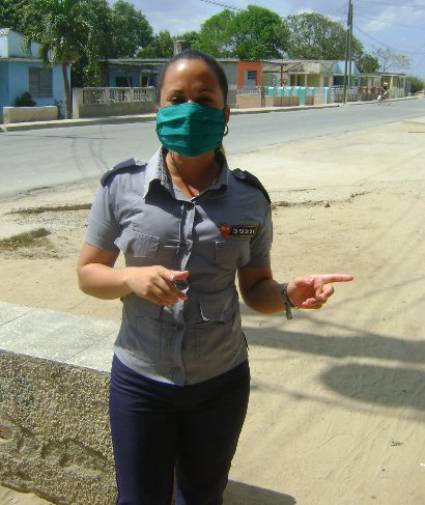
LAS TUNAS – “We women have always been present in the most transcendental moments of the history of the Revolution,” assures Rafaelia González. Author: Juan Morales Agüero Published: 07/07/2020 | 11:25
LAS TUNAS: Rafaelia González Rodríguez always had the feeling she was going to be a cop. At different times in her life, several of her relatives who wore uniforms conveyed to her the certainty that this was an important profession, responsible for guaranteeing public order, confronting crime and protecting legality.
‘That was one of the main reasons why I decided to study for a military career when my colleagues from MININT went to my pre-university to recruit students for the sector,” says the 24-year-old. I showed them my interest, and since then I have done nothing but strive to give my best to the people.
As soon as she finished 12th grade, she traveled to neighboring Camagüey to enroll at the Camilo Cienfuegos Military School.
These were five years of great rigor, both academically and in terms of training. According to her, she owes her will to improve and her sense of discipline to that school.
“I ended up as a cadet, and also as a law graduate in the criminology branch. In addition to that, the specialty itself, which in my personal case was public security,” she adds. In this last one, in the Camilitos I received the necessary preparation to be able to assume tasks like the chief of sector and to energetically face crime and illegalities in their different manifestations”.
After finishing her studies at the school in Agramonte, and by virtue of her evaluation results, the young woman began working at the police headquarters in Las Tunas. There, she was called to take an active part in the citizen’s organization in the context of COVID-19. She accepted, and from that moment on that is the task that occupies her day-to-day.
“My work at the headquarters is administrative, but I could not fail to join in this effort by our authorities to prevent the virus from spreading,” she said. Consequently, together with my colleagues, I enforce the health measures in place, including demanding physical distance in waiting lines and dispersing crowds”.
As far as she is concerned, she goes to her assigned site every day of the week to do her job. She says that in all cases she has always been respected by the people who come to these places. Even when she has called a person’s attention for violating any of the provisions, she has found receptivity.
“Many young people are involved in this work,” she says, “and among them, not a few women. In our case, we have overlooked domestic and family problems to respond to a call that we could not miss. We women have been present in all the transcendental moments of the history of the Revolution. And this is one of them.
“I have the support of my husband, an accountant who understands the duties of a military woman. I am also helped in every place I go by two members of the Prevention or Special Troops. The neighbors? They are supportive and grateful; they make themselves available for any need… Yes, I usually end up exhausted, but pa’lante. [life goes on]
Rafaelina is convinced that the participation of members of MININT in the control of citizens to prevent the spread of the coronavirus has been a great success. “Hopefully, this discipline and organization that we have helped to instill in the people in the present circumstances will remain for future stages,” she adds.
A Motherhood Story

JR Podcast: A Motherhood Story
On this occasion, JR Podcast spoke with Dachelys Valdés and Hope Bastian, who were recognized by the Cuban state as Paulo’s mothers. Read on and listen to the story.
 By Dailene Dovale de la Cruz
By Dailene Dovale de la Cruz
digital@juventudrebelde.cu
July 20, 2020
Translated and edited by Walter Lippmann for CubaNews.
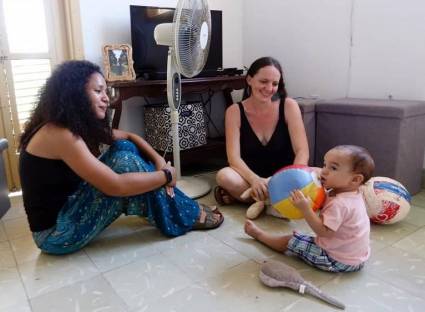
Dachelys Valdés and Hope Bastian, mothers of Paulo Author: Courtesy of the source Published: 20/07/2020 | 06:07 pm
Dachelys Valdes and Hope Bastian were returning from Florida with a concern. Would the pregnancy test be positive?
They met in Cienfuegos, in 2015, during the First National Meeting on Gender Studies and Non-Heteronormative Sexualities. They fell in love. They started a relationship and when they saw it consolidated, they decided to have a baby.
The first thing they did was consult their family doctor. He, kind and diligent, investigated the possibilities of accessing assisted reproduction services and returned the bad news. They could not access the service because equal marriage was not yet recognized in Cuba.
Nor did they find other options. Or yes, but in extremely risky ways.
A friend could pretend to be a partner of one of them, but what if he claimed his rights as the biological father? So many possibilities for disaster: divorce, death. They didn’t want to live in fear. They traveled to Florida with a very deep longing. On their way back they had a little boy in Hope’s belly.
Hope’s name is equivalent to our Esperanza that symbolizes very well the feelings of both women, when they got off the plane on Cuban soil.
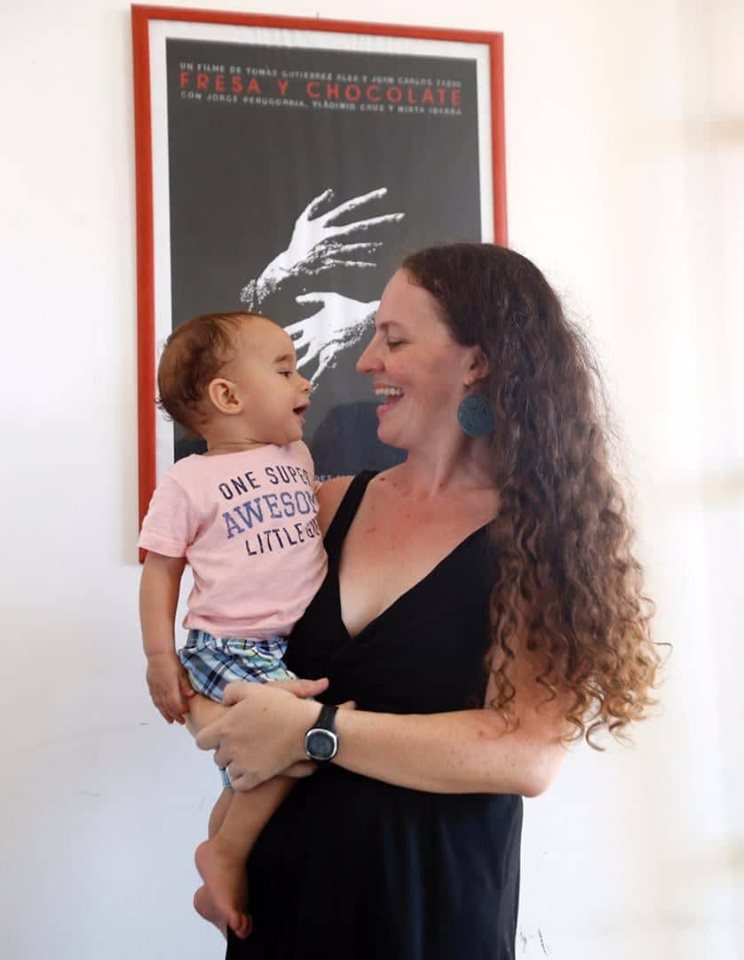
Photo: Courtesy of the interviewees
In Cuba, the birth certificate was slightly changed. The doctor, without anyone getting in the way, crossed out the predetermined male figure and wrote down Dachelys’ name. A small but significant gesture.
Dachelys Valdés is grateful and remembers this stage fondly. They attended the consultations with an in vitro fertilization specialist, no matter where it took place. They did not receive any discriminatory treatment, nor did they feel vulnerable, she confesses. And those who listen to her voice, very clear and soft but not docile, regain their faith in a more inclusive, less prejudiced and homophobic nation.
At the polyclinic, when they were going to be tested, they often tried to look for some sign of embarrassment in it. When they made it clear that they were the accompanying couple, they said “ah, it’s all right”, without further reaction.
Paulo was growing up in Hope’s womb in a calm and happy environment.

Photo: Courtesy of the interviewees
That was a collective pregnancy, the two first-time mothers were accompanied by fathers, brothers, friends.
That group of loving and supportive people has grown over time. I learned part of their story from a teacher at my school, Rocío Baró. One afternoon, at the end of 2019, she told me about the procedures both mothers took to obtain the Cuban citizenship of their little boy. She spoke with such great admiration of these two women that I promised myself to learn more about them, their experiences, their careers and their joys.
The desire became palpable in mid-June. I was checking Facebook, almost like an automaton, when the news came out. “The Cuban state legally recognizes that Paulo has two mothers.”
It had been worth the effort of the trip, for Dachelys to study how the birth would be, but in English. The losses in terms of comfort, being away from much of her support network.
…
Paulo’s citizenship is still an ongoing project, but it is getting closer. They have a document from the Ministry of International Relations, which endorses the possibility of access to the childcare center and free health services.
They also have a birth certificate, which guarantees double maternity, for the first time in Cuba. They arrived at great happiness, free of fear. The process of obtaining such a certificate was slower than usual for families made up of both parents.
First, they started the procedures from Florida, they sent the documentation by post and the certified translation. They returned with their child on a family visa, because it was more feasible to carry out the procedure from Cuba. They knew that due to the newness of the case, the process would take time. They did not expect it to be around a year, nor did they imagine a pandemic. Instead, they confess to being safe and grateful for the end result, of not being left behind.
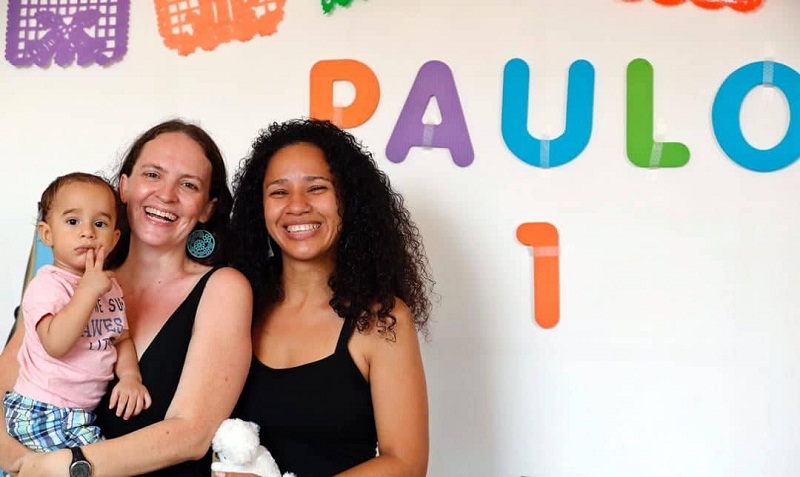
Photo: Courtesy of the interviewees
Since the announcement of their happiness, Dachelys and Hope speak a lot, to anyone who wants to know their story. They tell how they managed to realize their pregnancy and the remaining steps so that their child, for example, can have access to the food in the ration book. They feel that by telling of their experiences they make the LGTBIQ+ community more visible, the need to recognize the diverse forms of family, the access to assisted reproduction by same-sex couples, eliminating stereotypes. To recognize love and commitment as the only requirement to form a family.
They would like their story not to be isolated, not only for couples with resources and access to treatment in another country, although they understand that the laws and social sciences need reality to knock on their doors. And they are ready to continue, with every knock and every step, to bequeath to Paulo a more inclusive and happy Cuba.
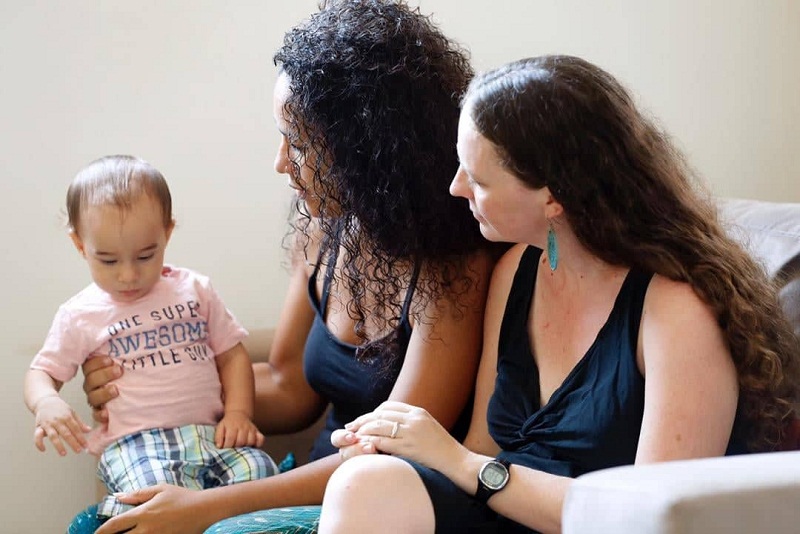
Photo: Courtesy of the interviewees
These are some excerpts from this story. If you want to hear from the voice of Dachelys Valdés and Hope Bastian, the emotions, fears, unforgettable moments, just listen to our podcast. Don’t miss it! [in Spanish]
Women’s Faces and Actions

Women’s Faces and Actions
In Santiago, 17 women serve as sector chiefs of the National Revolutionary Police (PNR)
By Odalis Riquenes Cutiño
July 18, 2020
Translated and edited by Walter Lippmann for CubaNews.
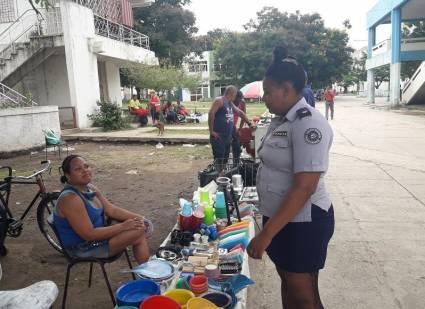
“If women build, how can we not be able to maintain order in the neighborhoods,” says First Lieutenant Evelyn Blanco Cadalzo, in charge of sector No. 102, in the Jose Marti Urban Center Author: Jose Angel Morales Published: 18/07/2020 | 10:24 am
SANTIAGO DE CUBA. For eight years now, the days of the young first lieutenant of the National Revolutionary Police (PNR), Evelyn Blanco Cadalzo, have had the duration of the surrender, the imprint of the sense of duty.
That’s just how long since she graduated from the former Interior Ministry (Minint) Hermanos Marañón University, as a law graduate specialized in public security. Since then, she has been the head of Sector 102 of the First Station, popularly known as Micro Nueve, in the José Martí urban center.
She has under her jurisdiction Blocks A and B of the José Martí Sur Popular Council, a community where she was born and has lived for her 27 years. It’s an area which, although not complicated in terms of criminal potential, is a recipient of criminals from other parts of the city who come there to commit offenses and crimes, such as robbery with force and theft with violence.
Preserving order in the place where you were born, where you have your friends and everyone knows you can be difficult if you are not clear that when duty calls, it is the first thing to be maintained: “You have to have character, set limits well and show that things done badly should not be seen by anyone anywhere in the world.
At the beginning of the year, this novel member of the PNR showed her courage and professional stature by getting involved in what could be considered the most notorious case she has ever been involved in: the capture of an escaped rapist, whom she had to protect from an angry mob with no other shield than her own body.
Hours earlier, as part of her operational work, she learned of the occurrence in her popular council of the reprehensible act against an eight-year-old girl,. Her first admitted thought was for his three-year-old daughter, Hasly Emely Estiven Blanco. She even thought about what she would do to that monster if she had it in front of him at that moment.
Later, chance gave her the opportunity to support her partner in charge of the investigations in the case, first sub-officer Luis Salmón Borrero,. After a long time of tracking him, when she found the offender in the middle of a crowd trying to lynch him, she reacted as she was taught in the ranks of the Cuban Police and took him out at the risk of her own life, protecting him until she could drive him.
“At that moment I felt it was my duty to prevent that man from being attacked. Cuba is a state governed by the rule of law and no one can take justice into his own hands; that is what the law is for,” she stressed.
Evelyn’s daily routine knows about beginnings, but never about the time of return, and even less about what each day will bring: “You know that you start work at 8:00 in the morning, the rest is dictated by the day. Sometimes you think: I’m going to have a little meal at home today… and in the end, you can’t because you have to do a search, an operation, or you get information that you have to deal with immediately. That’s why I’m so grateful for the support of my husband and my whole family, especially in caring for our daughter.
It is common to see her correcting, explaining, orienting, preventing the same thing in her office, in Block J of the José Martí district, or in the area for self-employed workers next to the shopping center in Block B. She considers it her “red zone” because everyone has a license, but some persist in selling industrial products that constitute illegalities.
Whoever observes her realizes that she knows how to be firm and energetic, without losing her tenderness. Her walk is filled with the authority and respect that she has earned through her daily performance.
“The work of the sector chief is very rewarding. At the beginning, it can be cumbersome, but once you organize it and get to know the factors of the community, you realize that it is among the best specialties of MININT, because it allows you to communicate with people”.
Everyday heroines
The experience of First Lieutenant Evelyn Blanco Cadalzo is not unique in Santiago de Cuba, where 17 women, mostly young, work as sector chiefs in the PNR stations.
Being a woman and leading a sector does not imply any additional limitations, insists Evelyn Blanco. “It used to be seen as something rough, but not anymore. Today people in the community accept it, take it as something normal, which we can perform successfully. If women can build, how can we not be able to maintain order in the neighborhoods? Everything is in the heart and the dedication you put into it; that’s how you earn respect.
However, there are still hurdles to overcome in the experience of First Lieutenant Gretchen Pérez Delgado, sector chief at the 30 de Noviembre Popular Council. She goes out every day to combat illegalities in an area plagued by many important economic objectives and a very diverse population.
“Each day brings complexities. Sometimes people on the street think that because you are a woman you are not going to do your job and they try to look down on you. We have shown that we can do this work, and in fact, we do it with the same quality as men,” insists this energetic girl, the mother of a two-year-old girl.
For First Lieutenant Tamara García Cala, chief of sector No. 62, in the community of PetrocasasSalaíto, in the Abel Santamaría Urban Center, without the support of the family it would have been impossible to get the job done during her two and a half years of service.
So does Lieutenant Reyna Nápoles Fabré, who heads Sector 55, which covers the San Juan area. Her two children and her husband have been instrumental in her performance. With 29 years of service in the FAR and MININT, she walks without fear at any time in her territory: “Being a police officer is my pride, and I really like the work as head of the sector because every day you learn about the human being and their social performance.
“I try to enforce what is established, but always reaching out to people. Every day I get up at 5:00 in the morning to be early in my area. The first thing I do is visit the community factors, get interested in the social reinsertion of some who are on probation, for example. Explaining, giving arguments, are keys to achieving the transformation of people, emphasizes Naples Fabré.
During the last three months, the rigors of the confrontation with COVID-19 in the slums added new tasks for these community heroines. For more than ten hours, the first NCO, Yenis Pereira Batista, sector chief in the Abel Santamaría neighborhood, risked contagion until she was able to transfer a suspected case of SARS-CoV-2 to the hospital.
“Usually,” she says, “I stay more at work than at home, and in this health situation, I have been almost always in the Sector, walking the area, visiting families and verifying that the measures are being complied with. When we see that we were able to contain the epidemic, without being confident, it is comforting to know that it was worth the effort.
This satisfaction is also felt in many communities in Santiago and in other provinces, where the population lives its daily life with confidence because they know that women and men of the stature of the interviewees defend the order and tranquility of the citizens in their neighborhoods and streets.
Viola Davis Regrets Acting in THE HELP

Viola Davis Once Again Regrets Performing in THE HELP
July 15, 2020
Translated and edited by Walter Lippmann for CubaNews.

Viola Davis plays Aibileen Clark in the 2011 Maids and Ladies Firm. Autor: Frame of the film Published: 07/15/2020 | 02:50 p
This is not the first time that Viola Davis has publicly rejected her role as Aibileen Clark in the drama THE HELP, which this time she has described, in an interview with Vanity Fair magazine, as a film that maintains “the narrative of the white savior” and that did not give enough prominence to the black maids, reports the DPA agency.
The actress, who was nominated for an Oscar for best lead actor for her appearance in that film in 2012, has once again shown her regret, now within the context of the Black Lives Matter movement. Already in 2018, Davis showed h displeasure with the film directed by Tate Taylor in 2011.
“There’s no one who hasn’t enjoyed THE HELP, but there’s a part of me that feels I betrayed myself and my people,” Davis explains in an interview for the magazine she’s the cover of. “I was in a movie that wasn’t programmed [to tell the whole truth],” she adds, denouncing that the film is made “with the filter and the sewers of systematic racism.
Davis also denounces the lack of Black voices in the creative process in Hollywood. “There are not a lot of narratives that are involved in our humanity [referring to the African-American community],” she explains. She adds that the writers, directors and producers “try to delve into the idea of what it means to be Black, but thinking essentially about a white audience.
She added that in Hollywood “there are not enough opportunities for an unknown Black actress” to “get ahead” in the industry. In this way, Davis, who had already been nominated for an Oscar before THE HELP for her role in THE DOUBT, justifies her participation in the film that also starred Emma Stone, Jessica Chastain, Bryce Dallas Howard and Octavia Spencer, who won the Oscar for this film. “I was that actress who was trying to get into [the industry],” she says.
Not only Viola
Just a few weeks ago, Bryce Dallas Howard also disowned the film and recommended that the public not see THE HELP as a reference for fighting racism. The singer also added that she “would not” have participated in the film if it had been shot today.
It was in an interview with the Los Angeles Times that the Jurassic World actress spoke about the need to give voice to Black creators and for them to be the ones to address the African-American reality.
“I wouldn’t appear in the film again [if it had been made today]. I’ll tell you why: I’ve realized that now people have the courage to say, ‘With all due respect, I love this project, but I don’t think you should be the one to direct it. That’s a very powerful thing, to be able to say it,” the actress explained.
“In this transformation that’s happening, a new freedom of expression is emerging,” Howard added, emphasizing the importance of black voices in the industry, referring to the Black Lives Matter movement.
US Betting on Reality Not Falsehoods

US Betting on Reality and not Trump’s Falsehoods
As new cases of the disease reach 60,000 a day across the country, many leaders, including those who supported Trump’s aggressive approach, now have no choice but to prioritize science over policy, leaving the president out of touch with reality
July 14, 2020
By Juventud Rebelde
digital@juventudrebelde.cu
Translated and edited by Walter Lippmann for CubaNews.
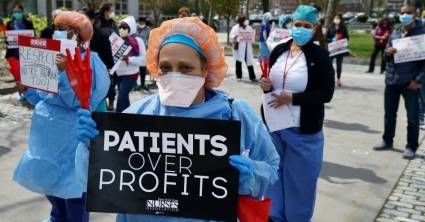
New cases of the disease reach 60,000 a day nationwide Author: Getty Images Posted: 07/14/2020 | 02:15 pm
While President Donald Trump is obsessing over his reelection hopes in his White House bubble, state and local leaders are frantically reversing the state reopenings he demanded, making the United States the largest access point for the coronavirus in the world, says a CNN analysis.
As emergency rooms filled up and the virus accelerated its relentless march through southern and western states, Trump clung to the fiction that the worst is over: “We had to close it; now we’re opening it,” President Trump said of the economy, patting himself on the back for saving “millions of lives.
As new cases of the disease reach 60,000 a day across the country, many leaders, including those who supported Trump’s aggressive approach, now have no choice but to prioritize science over policy, leaving the president out of touch with reality.
In Texas, Houston Democratic Mayor Sylvester Turner proposed a two-week shutdown, days after Republican Governor Greg Abbott raised the possibility of tougher measures after issuing a mandate to wear the mask that offended conservative orthodoxy. West Virginia called for the closure of bars in the hardest-hit county.
In California, Democratic Governor Gavin Newsom ordered the closure of all restaurants, grocery stores, movie theaters, zoos, museums and all bars. Los Angeles and San Diego said their children would start the new school year online only. Oregon banned gatherings of more than ten people inside due to an “alarming increase” of cases in the state.
KFC encouraged franchises in Florida, Texas, Oklahoma and California to stop serving. Florida on Saturday set a record for any state in one-day data on new infections, and COVID-19 cases continue to rise.
The picture is one of a nation that is beginning to close again in defiance of the President’s triumphant but misleading claims that he is leading a “transition to greatness,” the analysis released by CNN says.
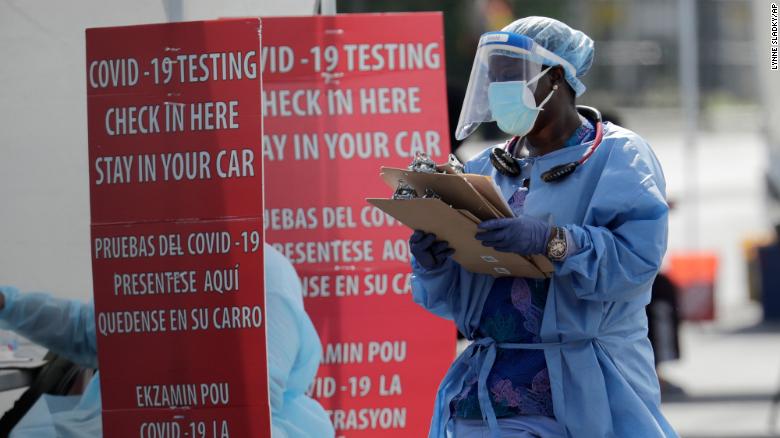
A health care worker carries a stack of clipboards at a COVID-19 testing site sponsored by Community Heath of South Florida at the Martin Luther King, Jr. Clinica Campesina Health Center, during the coronavirus pandemic, Monday, July 6, 2020, in Homestead, Fla. (AP Photo/Lynne Sladky)
The restrictions imposed on cities as large as Houston and Los Angeles could reverse the surprising economic revival of last month. The modest employment gains, trumpeted by the President, could turn into permanent job losses.
In comments that are likely to infuriate Trump even more, Dr. Anthony Fauci, director of the National Institute of Allergy and Infectious Diseases, made what is, unfortunately, becoming an obvious point: the rapid openings have triggered a disaster.
“It’s very clear — and we know from countries around the world — that if you physically separate people to the point where you don’t allow the virus to spread … we know we can do it if we close,” Fauci said at a Stanford Medical School webinar.
“We don’t close down completely – and that’s why, when we went up, we started going down, and then we stagnated at a level that was really quite high – about 20,000 infections a day,” Fauci said. “So, when we started to reopen, we’re seeing today’s waves, as we speak, in California … in Arizona, in Texas, in Florida, and in several states.
There are some bright spots. For the first time in months, there were no COVID-19 deaths in New York City in a 24-hour period, a moment of liberation that Democratic Mayor Bill de Blasio called “knock and move.
Massachusetts announced that its seven-day average of positive tests had fallen to 1.7 percent — 94 percent less since mid-April. The lesson for states now at the center of the storm — which predated the U.S. Centers for Disease Control and Prevention’s guidelines on safe reopening — is sobering.
New York and Massachusetts bought what may still be only a temporary truce with the coronavirus for weeks of closures and a strict reopening process that waited for the infection curve to be properly suppressed before restrictions were lifted. Even now, there is no guarantee that the virus will not return to dangerous levels when normal life returns.
However, El Nuevo Herald reports that Florida reported 9,194 new confirmed cases of coronavirus on Tuesday and 132 deaths in 24 hours, the highest number of deaths from the disease recorded in the state since the start of the pandemic in March, according to the Florida Department of Health.
The state set a national record on Sunday with 15,300 infections on the day, but Republican Gov. Ron DeSantis of Florida is insisting on a reopening.
Assisted Reproduction Options

Roads are Opening Up
The Assisted Reproduction service combines various techniques to achieve a pregnancy when something prevents it from occurring naturally. It is an expensive specialty and demands technology, both for the diagnosis of the obstacle and for its solution
By Mileyda Menéndez Dávila
July 14, 2020
Translated and edited by Walter Lippmann for CubaNews.

Assisted Reproduction Author: Juventud Rebelde Published: 14/07/2020 | 11:04 pm
The Assisted Reproduction (AR) service combines various techniques to achieve a pregnancy when something prevents it from occurring naturally. This is an expensive specialty that demands technology, both for the diagnosis of the obstacle and for its solution.
High-tech options
Vitro Fertizization (IVG) requires an authorized laboratory for the sperm to fertilize the oocytes in a controlled environment. In less than a week, viable embryos can be transferred to a woman’s uterus to follow the natural course or frozen.
It is a complex, laborious method; only a quarter of the transfers are effective. The number of attempts depends on the number of embryos achieved.
There are classic IVF (the environment is created and the cells are activated) or by intracytoplasmic injection (the sperm is inoculated directly into the cell). In Cuba the first one is done.
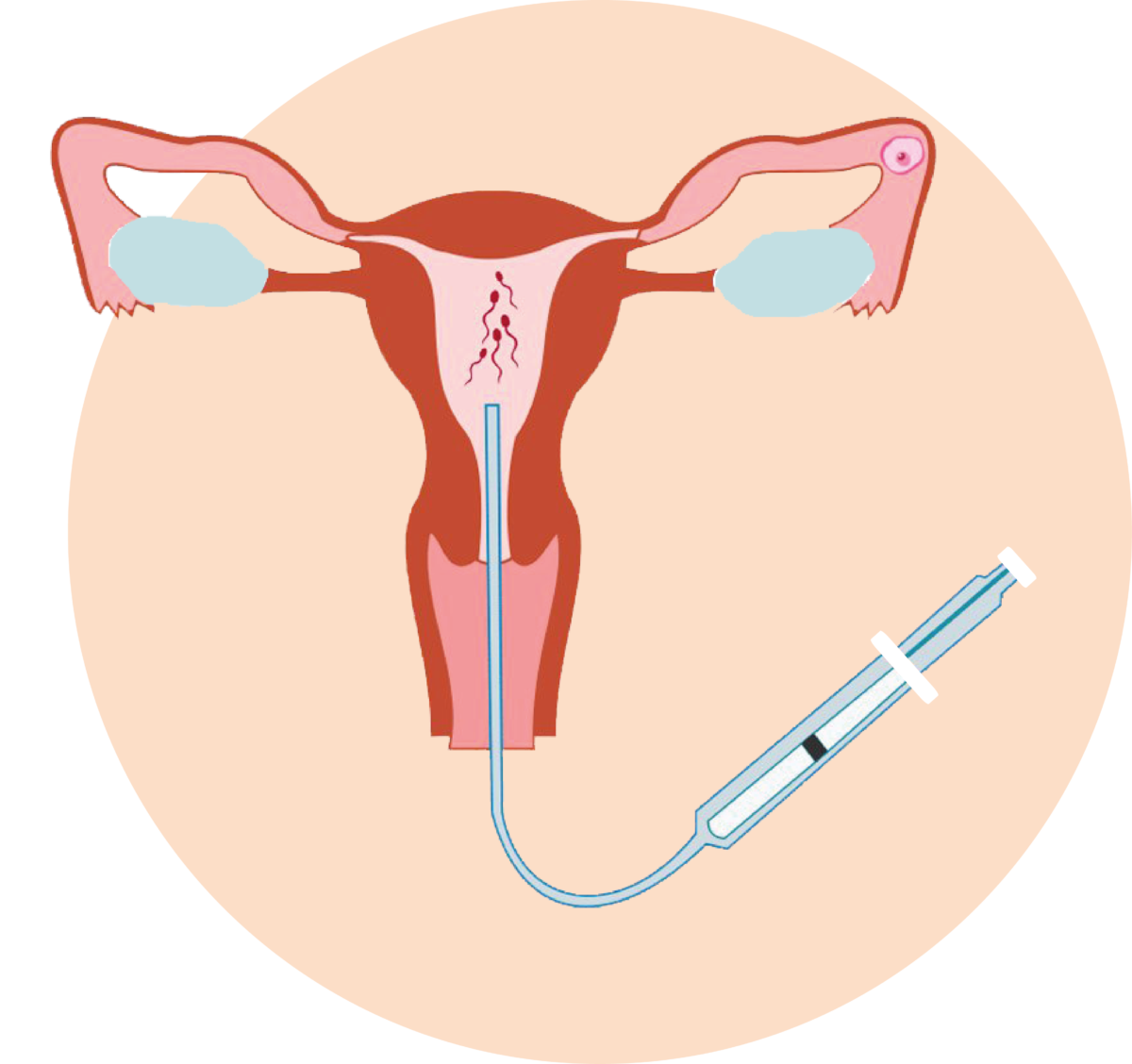
Low-tech options
The most common technique is artificial insemination (AI): a catheter is used to deposit a concentrate of previously purified sperm in the uterus and fertilization is expected to occur. It can be fresh or frozen semen.
Depending on the link between the recipient and the donor, the AI is homologous if there is a marital relationship, or heterologous when the sperm comes from a bank (guaranteed, but anonymous).
The technique is simple and its complications are very low. The probability of success is between 15 and 25 percent, but several attempts can be made. High-tech options
In Vitro Fertilization (IVF) requires an authorized laboratory for the sperm to fertilize the oocytes in a controlled environment. In less than a week, viable embryos can be transferred to a woman’s uterus to follow the natural course or frozen.
It is a complex, laborious method; only a quarter of the transfers are effective. The number of attempts depends on the number of embryos achieved.
There are classic IVF (the environment is created and the cells are activated) or by intracytoplasmic injection (the sperm is inoculated directly into the cell). In Cuba the first one is done.

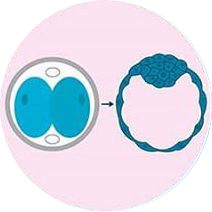
In vitro fertilization Observation of the embryonic development day by day
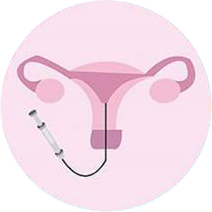
Embryo transfer to the uterus
The technique is simple and its complications are very low. The probability of success is between 15 and 25 percent, but several attempts can be made.
Solidarity childbirth
An increasingly common option for overcoming obstacles is surrogacy: a healthy woman is inseminated or lends her womb to receive embryos, and then hands over the baby to the person or couple who will raise it.
Examples of solidarity are the donation in sperm banks and giving embryos to other women when the desired number of children has been reached and they are available. Countries should regulate these processes because of the ethical and legal implications for their participants.
More than infertility
The AR is a useful service for very diverse users:
– Couples who are infertile due to a health condition detected in one or both of their members.
– Couples with no apparent obstacle that has tried for a reasonable time and does not achieve the desired pregnancy.
– Persons who wishe to exercise maternity or paternity without another parental figure in the upbringing.
– Couples of the same sex who depend on a donor or supportive womb.
– A person whose circumstances prevent the materialization of coitus or the assumption of parenthood and who wants to preserve his or her reproductive cells for more opportune stages. This has been the case for artists, sportsmen, people deprived of their liberty, with high-risk jobs or under medical treatment that compromises their fertility.
Deteriorated Highways Being Repaired

Deteriorated Highways Being Repaired
Villa Clara’s routes of national interest from the road to the tourist pole of Cayo Santa María are being repaired
 By Nelson García Santos
By Nelson García Santos
July 16, 2020
Translated and edited by Walter Lippmann for CubaNews.

Road to the tourist pole of Cayo Santa Maria Author: Twitter Published: 16/07/2020 | 10:55 am
SANTA CLARA, Villa Clara – In order to maintain the safety of traffic, conservation or repair actions are progressing in sections of the National Highway and the Central Highway in areas corresponding to this province, and the Caibarién to Cayo Santa María embankment, an important tourist pole in the northeast of the territory.
On the latter road, the laying of 2,000 tons of asphalt mix over three kilometers was completed, while the repair of three bridges, the metal road protection containers over seven kilometers and the renovation of signaling and repair of promenades, among other works, is in progress.
Pedro Julio González León, director of the Provincial Feasibility Center, emphasized that three kilometers of the motorway were also repaired, including the laying of rolling asphalt. Potholes were removed on the section between kilometre 260 and kilometre 320.
This and other works will continue in order to maintain the vitality of this road that, which, due to its years of operation, already needs capital repair in certain places
In addition, 1,900 tons of asphalt were laid along two kilometers of the Central Highway in Villa Clara Improvement work will continue there, as well as along the route from the Abel Santamaría International Airport to Caibarién and several of the Turquino Plan in Escambray.
What has been done, despite the limited resources and other effects, is part of the country’s effort to renew and stop the damage to the roads.
Subscribe to Blog via Email
| M | T | W | T | F | S | S |
|---|---|---|---|---|---|---|
| 1 | 2 | 3 | 4 | 5 | 6 | 7 |
| 8 | 9 | 10 | 11 | 12 | 13 | 14 |
| 15 | 16 | 17 | 18 | 19 | 20 | 21 |
| 22 | 23 | 24 | 25 | 26 | 27 | 28 |
| 29 | 30 | 31 | ||||


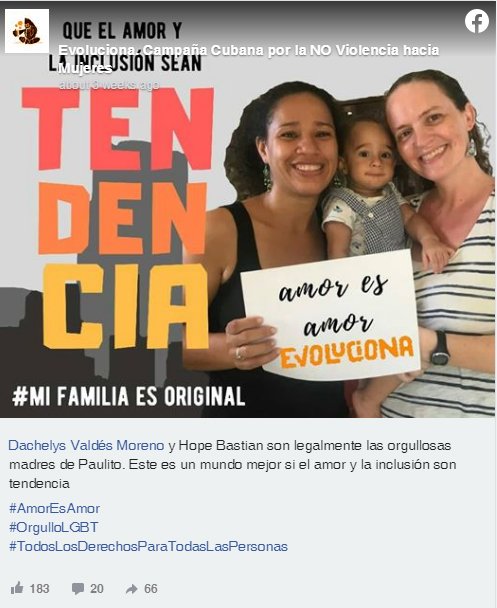
You must be logged in to post a comment.